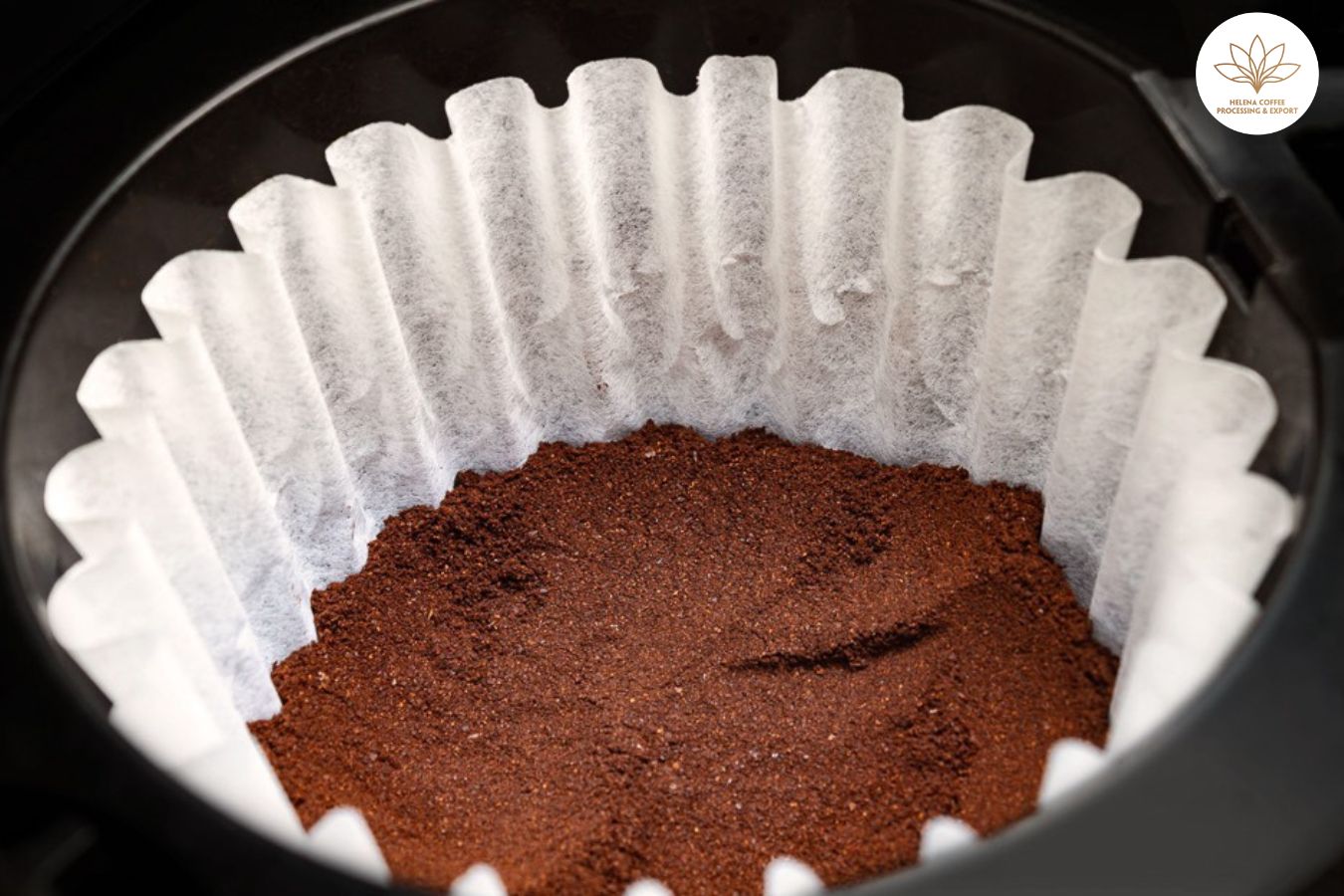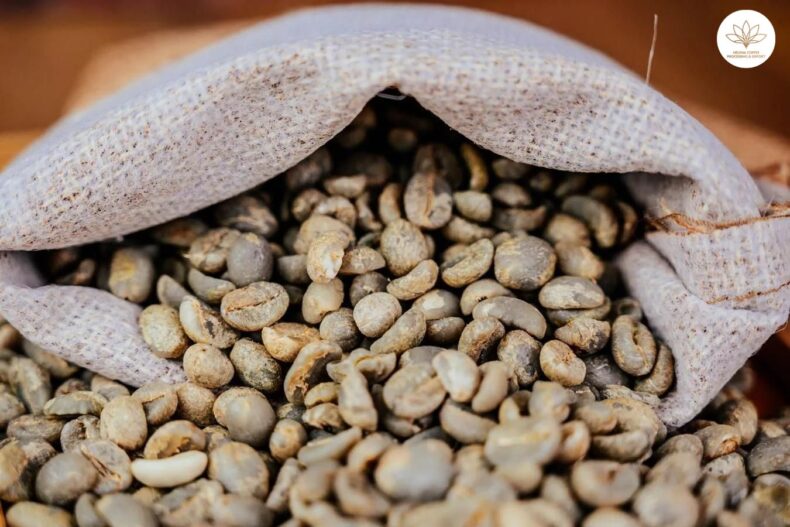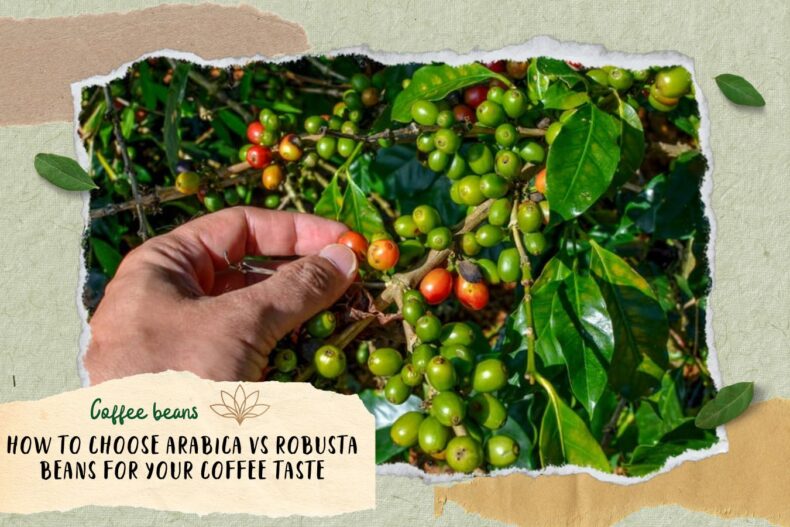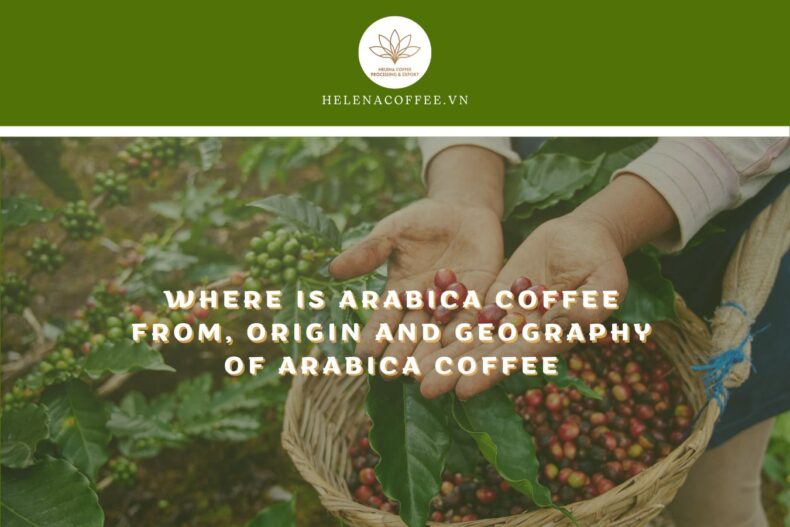
Referring to Arabica coffee, people immediately think of coffee lines with natural fruit flavors, floral flavors, honey flavors, balanced physicality and sweet aftertaste. So where does Arabica come from, how the characteristics of this coffee line will be presented by Bonjour Coffee in the following article.
Besides, to better understand coffee, you can refer to the coffee knowledge overview article. This article summarizes the basic information, but it is the basis for you to start learning about coffee.
About the Arabica line at a glance
Arabica coffee is scientifically known as Coffea Arabica. In Vietnam, the coffee line is also called Tea coffee. Arabica has a rich, sour, fruity, sweet aftertaste and a balanced physicality. The caffeine content of this coffee bean only accounts for 1-2%, much lower than that of Robusta.
Historical origins of Arabica
The name Arabica originated as far away as the Arabica Peninsula in Arabia. Many stories have it that this type of coffee first appeared in Ethiopia in Africa. After its introduction to the Arabian Arabian Peninsula was considered an esoteric drink. Therefore, this peninsula has gradually become known as the exclusive place for Arabica coffee. Probably, it is also because of this fact that the name of this coffee bean is taken from the name of the Arabian Peninsula.
Arabica coffee was first cultivated by Arabs in the 14th century. However, by the 17th – 18th centuries, this coffee variety was popular in many places. To date, Arabica accounts for 70% of worldwide coffee production.
Arabica coffee tree biology features
Arabica grows well at an altitude of 900-2000m above sea level, rainfall of 1,500-2,500mm/year, suitable temperature from 15-25 degrees Celsius. Arabica has a small crown, leaves of oval shape and dark green color, coffee fruits are oval. When mature, the tree can reach a height of 2.5m – 4.5m. There are even many trees growing in wild conditions that can reach a height of 10m.
Arabica coffee has high economic value but is difficult to grow and care for, low yield, poor resistance to pests and diseases. The harvest time is usually 3-4 years after planting. Arabica is about 25 years old. Under natural conditions, this coffee tree can reach a lifespan of 70 years.
Popular Arabica coffee lines
Arabica coffee is very diverse. There are about 125 varieties of coffee belonging to the genus Arabica. Popular and popular lines such as: Typica, Bourbon, Heirloom, Catimor or Catuai. Each line of Arabica will have flavor characteristics when enjoyed. In addition, each type will also have different cultivation requirements, so the output as well as the distribution area are not the same.
Typica
Typica is considered the first coffee variety discovered and grown in Ethiopia. In Vietnam, this coffee line was grown by the French in Cau Dat in Da Lat in 1857.
Typica has a mild, clear sourness, thick physicality, and a deep sweet aftertaste. Although it has high value, this is a coffee variety with low growing yield, poor resistance to pests and diseases.
Bourbon
If it comes to Arabica coffee genera, Bourbon is considered one of the first naturally mutated coffee strains discovered in Bourbon Island. Bourbon is suitable at altitudes of 1000 – 1600 meters above sea level.
Bourbon has a characteristic sweet taste, fruity flavor, sweet aftertaste, gentle and balanced physicality. Although possessing an unparalleled taste, currently, in the Vietnamese market, Bourbon coffee is not popular. Due to their difficult to grow characteristics, the resistance is not high, so Vietnamese coffee growers have gradually replaced them with other coffee varieties with better yields.
Heirloom
Heirloom is the native coffee line of Ethiopia. This is a coffee variety that grows wild and naturally in mountainous forests. Heirloom coffee line has low yield but is highly appreciated for its quality. They possess a valuable natural genome, which enhances rich flavor and is highly resistant to pests and diseases.
Catimor
In fact, Catimor is a hybrid coffee variety of Arabica. It is characterized by slightly elongated grain. The reason why Catimor is one of the most popular Arabica coffee lines is because of its easy to grow. Moreover, the harvest yield is also very high. In particular, this coffee bean variety also has good resistance to pests and diseases.
However, according to coffee connoisseurs, the taste that Catimor brings in each cup of coffee is still not at the same level as other Arabica coffee. The taste of Catimor coffee has not yet been able to satisfy the class requirements of this drink enthusiast.
Catuai
First appeared in the world in 1972 in Brazil; The Catuai coffee strain is known to be a cross between the golden Caturra tree (purebred Arabica coffee) and the Mundo Novo tree (coffee hybrid from Bourbon and Typica). In Vietnam, this coffee variety was first recorded in 1980 when imported from Cuba.
The distinguishing feature of Catuai is its small tree shape. The fruits of the plant cling very firmly to the branches, not prone to falling. Besides, the kernel of this coffee variety has a round shape similar to Catimor coffee. However, the number of kernels with long seeds also appears abundantly due to variety heterogeneity.
On the other hand, this is a suitable coffee strain for growing in mountainous areas with an altitude of 1000 – 1200m above sea level, Besides, Catuai coffee has good resistance to pests and diseases. But on the contrary, their ability to adapt to the frosty environment is very poor. The requirement of care is also very high. Therefore, even if the coffee yield is high, overall, the cultivation of this coffee variety is not very profitable.
Arabica growing regions in the world
Referring to Arabica is referring to coffee varieties with great consumption in the world. With a preference for living in areas with fertile soil, the temperature is about 20 degrees Celsius and the rainfall during the year reaches the standard. Currently, Arabica coffee is being chosen by many countries around the globe to grow and become one of the leading places in coffee export. It can be mentioned as:
Brazil
With more than 150 years of history, Brazil is considered the coffee plantation in the world. With a coffee growing area of 100,000 hectares. Each year, the country produces more than 2.5 million tons of Arabica coffee.
Colombia
Even if temperature and rainfall factors in Colombia are substandard, the country still produces about 810,000 tons per year. This is one of the 3rd largest suppliers of coffee in general and Arabica coffee in particular in the world.
Ethiopia
This is the first place to record the appearance of Arabica coffee variety. For more than 1000 years, people here have considered coffee cultivation as the main job. Each year, the coffee harvest here reaches about 384,000 tons. At the same time, coffee also accounts for 28% of exports each year in this region.
India
India recorded coffee production of about 348,000 tons per year. Of those, 80% of the coffee grown is exported to Europe or Russia. The most popular coffee-growing region in this country is southern India.
Mexico
Mexico is known as a country capable of producing high-quality Arabica varieties. Annual production reaches about 234,000 tons. However, most of the coffee grown is exported to the United States.
Arabica growing areas in Vietnam
Dalat
Considered the “paradise” of Arabica coffee; Cau Dat and Da Lat owns a central plateau with a large area of red basalt soil. Besides, in Da Lat is located 1500m above sea level. The weather is cool all year round. The highest temperature of the year is also no more than 33 degrees Celsius.
Son La
This is an area with more than 100 years of history of growing Arabica coffee. Son La has many advantages in terms of weather such as: heavy rainfall in the year, not too high temperature, soil for mountains … This advantage has helped many regions here have a large annual coffee production such as Chieng Ban, Sinh Ban …
Nghe An
Located in the Central region, although Nghe An does not have cool weather patterns, it is still an area with a large Arabica coffee production in the country. The most prominent is in the Phu Quyen area. The most commonly grown Arabica coffee variety here is Catimor. Although it does not have a special sweet taste like Bourbon, this coffee variety possesses a unique salty taste and deep aroma.
Arabica coffee flavor characteristics
If you are a fan of Arabica, it is impossible not to know the typical taste of this coffee variety. According to experts, Arabica coffee has a sour taste mixed with a slight bitterness. The scent is faint, ethereal. When brewed, the coffee water will be light brown and slightly inclined to amber. In fact, the taste of Arabica coffee will have the influence of soil and climate factors.
Enjoy Arabica coffee
Due to its taste characteristics, Arabica pure coffee beans can be used for preparation by the following methods: Pour over, Moka, Syphon.. These brewing methods aim to fully enjoy the pure Arabica coffee flavor without the use (or very little) of milk or sugar.
Besides, you can also mix Arabica coffee with Robusta to enhance the aroma, reduce bitterness when making filtered coffee, Capuchino, Espresso …
Understanding coffee helps you have a better way to enjoy coffee. With interesting information about Arabica coffee, Bonjour Coffee believes you have the most basic knowledge about this famous coffee. Bonjour Coffee will continue to update information for you to have the most complete view of this coffee line.
Discovering the Rich Flavors of Vietnam with Helena Coffee Vietnam
Helena Coffee Vietnam is a Buon Ma Thuot-based coffee roaster specializing in sourcing and roasting high-quality coffee beans worldwide. Their mission is to provide coffee lovers with the freshest and most flavorful coffee possible while supporting sustainable and socially responsible practices in the coffee industry.
Helena Coffee Vietnam‘s product line includes coffee beans, ranging from single-origin beans to unique blends with complex flavors and aromas. Whether you prefer a light or dark roast, fruity or nutty flavors, Helena Coffee Vietnam has a coffee that will satisfy your taste buds.
Their commitment to quality extends beyond just the coffee itself – Helena Coffee Vietnam prioritizes environmentally sustainable practices and ethical sourcing. They work closely with coffee farmers and cooperatives to ensure fair prices and practices that protect the environment and support local communities.
So if you’re looking for a truly exceptional cup of coffee, consider trying Helena Coffee Vietnam‘s products. With their commitment to quality, sustainability, and social responsibility, you can feel good about every sip
FAQS:


